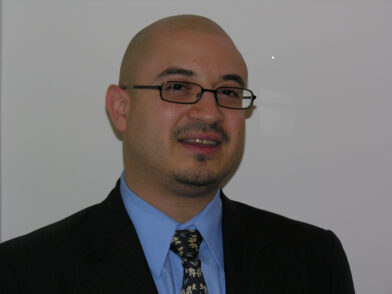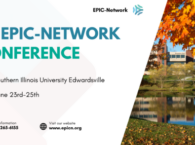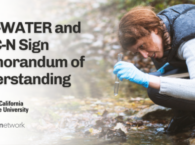José Zambrana, Jr. is advancing campus community partnerships and the use of science-based tools

José Zambrana, Jr.
Senior Science Advisor
Center for Environmental Measurement & Modeling
EPA Office of Research and Development
zambrana.jose@epa.gov
213-244-1819

Favorite Place
I love the So-Cal beach. I feel elation, joy, peace, fun, calm and inspiration all at once.
How did you first learn about EPIC-N?
I learned about it from Dr. Laura Bloch – a fellow colleague at EPA who is the sustainability advisor for EPA’s Region 9. We worked to have EPA sponsor a workshop in 2015 on forging campus-community sustainability partnerships where the EPIC Model was featured. After the workshop, six California State universities (East Bay, Monterey Bay, Sonoma, San Marcos, Fresno, and Chico), piloted EPIC programs!
What are some of the top priorities you are working on this year?
Some of my projects to support EPA’s work include building collaborations with states and tribes, considering ways to address contaminants of emerging concern, evaluating best practices for enhancing community resilience, and figuring out how EPA can best ‘translate’ it’s science for use by environmental and public health decision makers.
In what ways are you looking to engage, or work with others, either from within the EPIC-Network, or in general?
EPA’s Office of Research and Development and the EPIC-Network have just recently signed a Memorandum of Understanding to focus on enhancing and supporting efforts that can advance environmental, public health and community revitalization goals. The objective of this MOU is to provide a foundation for joint efforts on two goals: 1) Advancing campus community partnerships and the use of science-based tools and resources to support the environmental, public health, and revitalization efforts of local communities; and 2) Researching, understanding, and communicating best practices of communities in supporting local resilience. We are open to ideas of how to reach these objectives so please reach out with them!
What led you to participate within the EPIC-Network in your current capacity?
After the aforementioned 2015 workshop, we continued to work with the network of universities implementing the EPIC Model, especially new programs that started in the California State University system. It was exciting to see the great work in support of municipalities that came out of their partnerships. Connecting with these universities provided opportunities to share EPA’s research results, science-based tools and resources to support the partnerships, classrooms and research activities on the campuses. I became interested in understanding how resilience themes are addressed by municipalities from the projects they fund. I realized I could turn to the wealth of examples from completed EPIC-N projects funded by municipalities. Building on the collaboration already at work, the MOU was born and we are forging ahead in our joint work!
Bio
José L. Zambrana, Jr., PhD, is a senior science advisor in the Center for Environmental Measurement and Modeling of the United States Environmental Protection Agency’s Office of Research and Development (ORD). Prior to joining EPA, José was a Science & Technology Policy Fellow with the American Association for the Advancement of Science (AAAS) where he focused on environmental justice, strategic planning, and spurring high-impact, transformative environmental science research. José received his doctorate in inorganic chemistry from the Graduate Center of the City University of New York (CUNY). His current portfolio includes serving as ORD Liaison to the EPA National Tribal Science Council, providing project management leadership on issues of concern such as emerging contaminants and recycled tire crumb rubber, catalyzing research and development partnerships that advance overall resilience, and helping translate how EPA’s science tools and other research products can best support state, tribal and community-drive efforts both in the US and abroad meet local goals to protect human health and the environment while achieving additional social and economic benefits.


